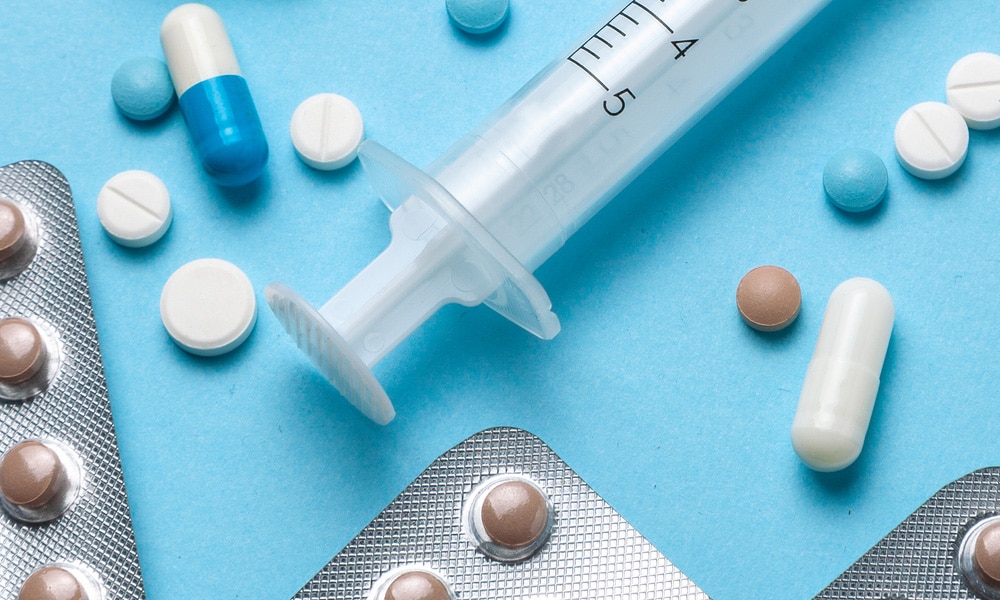You eat and then you don’t eat – one action predictably follows the other – always. When it comes to optimizing health and eliminating illness, the questions are: (1) how long should you not eat before you eat again, and (2) do benefits exist if you extend the not eating window beyond your comfort zone?
To understand the answer, let’s talk circadian rhythm, your 24-hour internal biological clock that helps regulate sleep patterns, feeding behavior, hormone release, inflammation, blood pressure and body temperature, to name a few vital processes. Circadian mechanisms also influence metabolism—how your body uses and stores energy—and this little factoid will prove key to the benefits of fasting. If you want your body to focus energy on removing dead, dying and damaged cells, and to replace them with rejuvenated, youthful cells, then you need to give your body a breakfrom the all-consuming task of dealing with the meal you just ate. When you stop eating, your body starts resting and repairing, but only after it processes your last meal. So what does that mean, exactly?
 We’ve been working hard on this. Add your e-mail address and we will tell you as soon as it launches.
We’ve been working hard on this. Add your e-mail address and we will tell you as soon as it launches.
The Hours Following a Meal
All you do is chew and swallow, but it normally takes about 48 hours for that food to become stool exiting the back door, and an immense number of tasks must occur within your digestive tract to turn those bites of food into nutrients that get absorbed into the bloodstream, and then transformed into usable energy by the liver. The first six to eight hours move your meal all the way through the small intestine using chemical and mechanical actions that break down macronutrients (proteins, carbohydrates, and fats) into their smallest molecular forms: proteins become amino acids, carbohydrates convert into glucose, and fats melt into fatty acids and glycerol. Your nervous system works alongside a slew of hormones to orchestrate this digestive symphony, with the big daddy of them all being… Insulin.
Think of insulin as you would your favorite penny-pinching relative: he’s all about waste not, want not – use it or keep it, but you’re not throwing this perfectly good food away. Mostly in response to glucose in the bloodstream, insulin flies out of your pancreas and starts barking orders: “Hey Cells, it’s dinner time! Come and get glucose and amino acids for whatever it is your cell-self does inside this human. You know, make some new proteins, fuel muscles, repair tissues, and boost that immune system. Sugar! You go into liver and muscle cells as glycogen. I’ll call on you first whenever we need energy and there isn’t any sugar floating in the blood. Fat! After you absorb vitamins, regulate inflammation, and deal with nerve function, go hibernate anywhere you can find a home. Nestle yourself around all the organs in the abdomen, and don’t forget to pad the hips, arms, thighs, and that area just under the chin – I love that spot. Liver! When the glycogen storage gets maxed out, turn the extra glucose into fatty acids because we’re going to make triglycerides and store that fat for later. You never know when this human might stop eating for days at a time, and by golly, we’ll be ready with plenty of fat-fuel.”
When it comes to energy, glycogen acts as your refrigerator providing a quick fix of glucose, and fat behaves like a freezer, where fuel is a little harder to free up for daily use. Insulin finishes playing food quarterback two to four hours after you eat a balanced meal, after which time, your body will open up the glycogen fridge and munch on some glucose to keep a steady stream of energy going. But here’s the thing: most people eat another meal or snack right about now, and the whole insulin game revs right back up. That’s not necessarily bad, but what would your body have done if you didn’t eat another meal today?
Get discounted Tier 2 tickets while they last. Watch the Summit via on-demand video from anywhere or attend in person at the breathtaking oceanfront Terranea Resort in Southern California.
Fantastic Fasting Facts
When you temporarily starve yeast and rodents, they live longer and become healthier than organisms fed a normal diet.[1] Incredible, right? They adapt to stress by invoking mechanisms that increase longevity and wellness. So in addition to focusing on what we eat, we should strategically plan when we eat. Researchers took three group of mice: obese mice, obese mice genetically modified to develop breast cancer, and those with manipulated insulin levels to be high or low.[2] After injecting all mice with breast cancer cells, each group was split into having 24/7 access to food versus only eight-hour access daily. No matter how you slice and dice it, the mice with restricted access to food always had dramatically less tumor cell expression and growth, and this was largely explained by their having lower overall insulin levels. Do people do that in response to caloric restriction (minus malnutrition)? A growing body of human scientific research strongly suggests that yes, the proven benefits of fasting as identified in yeast, worms, flies, mice and monkeys do indeed apply to man (woman) because it appears as though we mortals undergo many of the same molecular, metabolic, and physiologic adaptations typical of these organisms when exposed to fasting.[3] You might have thought that fasting would cause internal chaos as organs suddenly have to function with a disrupted circadian rhythm, but the science shows that fasting favorably alters the function of genes to the degree that it promotes longevity and protects against disease.[4]
Let’s innumerate the awesome rewards you will reap from food abstinence, and then we’ll talk nitty gritty details about how to fast.
- Weight Loss: Researchers compared two groups of mice, both consuming the same number of calories. They limited one group’s eating to an eight-hour window, while the other could eat at any time. After four months, the eight-hour mice weighed 28 percent less than the anytime eaters, and that didn’t change even when they partied on the weekend, eating ad lib two days a week.[5] Once all the glycogen in the refrigerator gets burned up for fuel (that takes 24 hours, sooner if exercising), guess what time it is? Freezer time! A 2014 review study of intermittent fasting found a 5–8 percent weight loss over 3–12 weeks, and – get ready to squeal with joy – people also dropped 10-20 percent off their waistlines, chasing away that stubborn belly fat wrapped around internal organs.[6] As long as you don’t overeat after fasting, you’ll consume fewer calories every week and also shed pounds because fasting boosts your metabolism.[7]
- Ketosis: When you switch to the freezer and mobilize stored fat, after 2-3 days of fasting, you enter a metabolic mode in which your predominant energy sources are fat-derived ketone bodies and free fatty acids instead of glucose. In addition to weight loss, emerging research suggests that ketosis may also be helpful for type 2 diabetes[8] and neurological disorders, including Alzheimer’s in adults and seizures in children.[9] Your brain’s metabolic switch in fuel source from sugar to fat might enhance the functionality of neural networks, and bolster their resistance to stress, injury and disease.[10]
- Enhanced Cognitive Function and Brain Health:Contrary to what many people expect, the fasted state sharpens your mind and memory while fasting and also in the future. Increased levels of a brain hormone called brain-derived neurotrophic factor (BDNF) encourage neuroplasticity – your brain’s ability to form new neural connections throughout life, as well as potentially staving off Alzheimer’s and Parkinson’s diseases, psychiatric disorders and major depression.[11]
- IGF-1 Down: The baddest of the bad contributors to oxidative stress, IGF-1, apparently just met its match – and the victory goes to… nothing. Eating “nothing” dissipates the number one contributor to inflammation, free radical formation, oxidative stress, illness and aging.[12]
- Illness Prevention: Fasting lowers weight, harmful LDL cholesterol, triglycerides, inflammatory markers, blood sugar and insulin resistance, so no wonder it protects against heart disease and hypertension.[13] Animal and human studies also connect fasting to a dramatic drop in diabetes, cancer, obesity, asthma, rheumatoid arthritis, stroke, and neurological disorders such as Alzheimer’s and Parkinson’s disease.[14]
- Insulin Sensitivity Up:When you require less insulin to mobilize all the sugar from your bloodstream, your insulin sensitivity is high, and that is good. See you later, heart disease and type 2 diabetes.[15]
- Autophagy:“Auto” means self and “phagy” means eat. Eat thyself. Cells go into serious housekeeping mode by digesting and removing dead, dying and dysfunctional proteins that build up inside cells. Autophagy has proven to be a crucial defense mechanism against malignancy, infection and neurodegenerative diseases.[16] This self-digestion is unique to fasting and kicks in after 2-3 days; it doesn’t happen in simple caloric restriction or dieting.
- Human Growth Hormone (HGH) Up: Whenever insulin disappears, HGH ramps up along with cortisol, and actually increases lean muscle mass and bone density during fasting past 24 hours, so you can curb that fear about losing your hard-earned biceps bulge during a fast.[17] Think about it. Your body stores fat solely to provide fuel in the absence of glucose, so in your hour of need, why would it suddenly take a chunk of protein from muscle instead? That’s as foolish as having a pile of wood next to your fireplace, and when it’s cold outside, you keep the wood and burn up your favorite armchair. Interestingly, HGH normally converts to IGF-1 in the liver, but this does not happen in a fasted state.[18]
- Immune System Rejuvenation: After 4-5 days of fasting, the immune system actually takes a hit with fewer infection-fighting cells, but at the same time, stem cells are called “to attention.” Stem cells can become whatever you need them to be, such as muscle or nerve or immune cells, and they maintain and repair the tissue in which they are found. The moment you eat again, say on day 6, boom!these stem cells rapidly multiply, and then regenerate a stronger, more competent immune system than you had before you fasted, replenishing your cell supply (e.g., those overworked liver cells that autophagy cleared away) with youthful, functional recruits.[19] This process can even lay down a new myelin sheath around neurons, raising the possibility of reversing multiple sclerosis as documented in mice.[20]
- Chemotherapy Optimization:Human studies show that fasting for three days prior to and then during chemotherapy minimizes collateral damage to healthy cells while maximizing the kill of malignant cells.[21]
Follow Power Up
Follow Power Up
Slow to Fast
If you define fasting as “abstinence from food and drink” (which would be the correct definition), odds are you’re like me and think, fasting = hunger = misery = I-am-not-doing-that.Let’s redefine fasting with an equally correct definition (according to me): the obtainment of mental clarity, weight loss and cellular rejuvenation while not feeling famished. Ah, now we’re talkin’. Cancer kicking, here we come!
It all started with the ancient hunter-gatherers, when food-finding missions failed and led to a forced famine. Since then, periodic fasting has been going on by choice for millennia. Religions often incorporate abstinence from food into their rituals. Muslims fast from dawn until dusk during the month of Ramadan; Christians, Jews, Buddhists, and Hindus traditionally fast on designated days of the week or calendar year. Outside of religious ceremony, many intentionally fast from what they can see and taste to heighten their awareness and communion with an invisible and infinite God, as their posture remains open, desperately hungry for spiritual clarity and peace – and they usually conclude such a fast, satiated.
As deep as that sounds, most people don’t fast. If they do, it’s usually to lose weight.
All methods of intermittent fasting split the day or week into eating and fasting periods. Water, tea, and black coffee (no milk, sugar, or sweeteners) are A-OK during most definitions of a fast; some variations allow limited calories such as from broth or small meals. Here’s a short list of the most popular fasts:
- Time-Restricted FeedingThis promotes the idea of tying eating to your circadian rhythm. If you finish eating around sunset and maintain a minimum 13-hour fasting window, you eat when it’s light, and fast when it’s dark.
- 16/8 Protocol With this popular plan, you fast for 16 hours, and then eat within an 8-hour window, cycling like this every 24 hours.
- Eat-Stop-EatYou go 24 hours without food 1–2 times per week, or every other day (“alternate day fasting”). A typical strategy is to eat dinner one day, and then feed again at dinner the next day.
- 5:2 Diet Eat normally for 5 days, and then fast two non-consecutive days a week eating only 500-600 kcal.
These plans are meant to be followed every single week of your life, for the whole of your life. The goal is to maximize health and lifespan. However, as you probably noticed in the impressive list of fasting benefits, the real heavy lifting with ketosis, autophagy and stem cell rejuvenation doesn’t even begin until 48-72 hours into food abstinence. This requires prolonged fasts that people might undertake monthly or biannually lasting several days to many weeks. A number of clinics now exist where physicians monitor patients undergoing a water-only or very low calorie (less than 200 kcal/day) fasting period lasting from one week or longer for weight management or purported disease prevention and treatment. The reality about prolonged water fasting beyond one day is that it’s too extreme for the majority of people, and they simply aren’t going to do it. What a shame, though, given the massive health benefits.
Well, the Fasting Mimicking Diet (FMD) offers an exciting compromise. If you could consume food every day, but your cells don’t know about it, then you’d feel satiated while your cells stayed in fasting mode and continued to burn fat, decrease inflammation, repair and rejuvenate. How can you trick your cells? When you consume predominantly fat, you don’t secrete insulin or wake up protein-sensing pathways that turn off the fasting mode. Win-Win! You get to eat while your body continues on with autophagy and stem cell renewal. The 5-day FMD resulted from decades of pioneering work on longevity by Dr. Valter Longo and his team at the University of South California. They conducted extensive research with millions of dollars in NIH funding resulting in meals tailor-made to create a plant-based ketosis that you simply cannot achieve with a 1-day water fast. The low protein, low carbohydrate, low sugar food is 80 percent unsaturated fat such as nut and seed bars and olives, as well antioxidant-laden teas and anti-inflammatory soups. A human clinical trial split 100 subjects with half eating the FMD for 5 consecutive days each month for 3 months, and half continuing their usual diet.[22] The FMD group showed profound differences in weight loss, visceral fat loss, waist circumference, drops in blood pressure, blood sugar, cholesterol, triglycerides, and markers of inflammation like IGF-1 and C-reactive protein. They increased their lean body mass (no muscle loss) and spiked stem cell production for several days after refeeding. Oh, and no one felt “hangry.”
Not So Fast
Certain illnesses and special situations preclude all types of fasting completely. Those passing in the no-fasting zone include people who are:
- Children and teenagers
- Women trying to conceive
- Pregnant women
- Nursing mothers
- Malnourished
- Underweight
- Hypothyroid
- Sick with flu, cough, or fever
- Type 1 and 2 diabetics (physician supervision advised)
And people with:
- Drops in blood sugar levels
- Nutrient deficiencies
- A history of an eating disorder
- Adrenal fatigue
- Gallstones
Hurry Up and Fast
What do you want? Spiritual awareness, more vibrant years on Earth (longevity), energy, more time in the day, a sharper mind, a thinner body, the least chance of heart disease, stroke, diabetes, dementia, Alzheimer’s, or of cancer taking you down? Based on what the scientific evidence about human biology suggests, I believe fasting is a key component to getting you whatever you want (short of a fasting genie to grant you wishes for riches).
I want that something extra in all aspects of life, and as part of my effort to max out the fruit produced in the orchard of my life as it pertains to food (literally), I regularly stop eating around 6-7PM and don’t eat for 16 hours every day; when I do eat, it’s whole food plant-based all the way (vegan); and twice a year, I reboot my immune system with the Fasting Mimicking Diet (FMD).
- Do you want to drop 10 pounds of fat?
- How about 5 points off your blood pressure?
- Maybe it’s time to lose that “pre-diabetic” threat by lowering blood glucose?
- If you want to reach a health goal, consider doing the FMD once a month until you achieve the results you want.
- Then, to tap into the cellular pathways of health and longevity, do the FMD once or twice a year.
References
- Fontana, Luigi, Linda Partridge, and Valter D. Longo. “Extending healthy life span—from yeast to humans.” science328.5976 (2010): 321-326.
- Das, Manasi, et al. “Time-restricted feeding: A dietary intervention to treat breast cancer in postmenopausal obese mice.” (2018): 377-377.
- Brandhorst, Sebastian, et al. “A periodic diet that mimics fasting promotes multi-system regeneration, enhanced cognitive performance, and healthspan.” Cell metabolism 22.1 (2015): 86-99.
- Zhu, Yueming, et al. “Metabolic regulation of Sirtuins upon fasting and the implication for cancer.” Current opinion in oncology 25.6 (2013): 630;
- Hatori, Megumi, et al. “Time-restricted feeding without reducing caloric intake prevents metabolic diseases in mice fed a high-fat diet.” Cell metabolism 15.6 (2012): 848-860.
- Varady, K. A. “Intermittent versus daily calorie restriction: which diet regimen is more effective for weight loss?.” Obesity reviews 12.7 (2011): e593-e601.
- Zauner, Christian, et al. “Resting energy expenditure in short-term starvation is increased as a result of an increase in serum norepinephrine.” The American journal of clinical nutrition 71.6 (2000): 1511-1515; Heilbronn, Leonie K., et al. “Alternate-day fasting in nonobese subjects: effects on body weight, body composition, and energy metabolism.” The American journal of clinical nutrition81.1 (2005): 69-73; Mansell, P. I., I. W. Fellows, and I. A. Macdonald. “Enhanced thermogenic response to epinephrine after 48-h starvation in humans.” American Journal of Physiology-Regulatory, Integrative and Comparative Physiology 258.1 (1990): R87-R93.
- Azar, S. T., H. M. Beydoun, and M. R. Albadri. “Benefits of ketogenic diet for management of type two diabetes: a review.” J Obes Eat Disord 2.02 (2016).
- Neal, Elizabeth G., et al. “The ketogenic diet for the treatment of childhood epilepsy: a randomised controlled trial.” The Lancet Neurology 7.6 (2008): 500-506; Gasior M, Rogawski MA, Hartman AL. Neuroprotective and disease-modifying effects of the ketogenic diet. Behav Pharmacol. 2006;17(5-6):431-9.
- Mattson, Mark P., et al. “Intermittent metabolic switching, neuroplasticity and brain health.” Nature Reviews Neuroscience 19.2 (2018): 63.
- Martin, Bronwen, Mark P. Mattson, and Stuart Maudsley. “Caloric restriction and intermittent fasting: two potential diets for successful brain aging.” Ageing research reviews 5.3 (2006): 332-353; Reus, Gislaine Z., et al. “Neurochemical correlation between major depressive disorder and neurodegenerative diseases.” Life sciences 158 (2016): 121-129; Bredesen, Dale E. “Reversal of cognitive decline: A novel therapeutic program.” Aging (Albany NY) 6.9 (2014): 707; Lee, Jaewon, et al. “Dietary restriction increases the number of newly generated neural cells, and induces BDNF expression, in the dentate gyrus of rats.” Journal of Molecular Neuroscience 15.2 (2000): 99-108.
- Cheng, Chia-Wei, et al. “Prolonged fasting reduces IGF-1/PKA to promote hematopoietic-stem-cell-based regeneration and reverse immunosuppression.” Cell stem cell 14.6 (2014): 810-823; Parrella, Edoardo, et al. “Protein restriction cycles reduce IGF‐1 and phosphorylated Tau, and improve behavioral performance in an Alzheimer’s disease mouse model.” Aging cell 12.2 (2013): 257-268; Wei, Min, et al. “Fasting-mimicking diet and markers/risk factors for aging, diabetes, cancer, and cardiovascular disease.” Science translational medicine 9.377 (2017): eaai8700.
- Varady, Krista A., et al. “Short-term modified alternate-day fasting: a novel dietary strategy for weight loss and cardioprotection in obese adults.” The American journal of clinical nutrition 90.5 (2009): 1138-1143; Antoni, Rona, et al. “The effects of intermittent energy restriction on indices of cardiometabolic health.” Res Endocrinol 2014 (2014): 1-24; de Azevedo, Fernanda Reis, Dimas Ikeoka, and Bruno Caramelli. “Effects of intermittent fasting on metabolism in men.” Revista da Associação Médica Brasileira (English Edition) 59.2 (2013): 167-173.
- Wei, Min, et al. “Fasting-mimicking diet and markers/risk factors for aging, diabetes, cancer, and cardiovascular disease.” Science translational medicine 9.377 (2017): eaai8700; Longo, Valter D., and Luigi Fontana. “Calorie restriction and cancer prevention: metabolic and molecular mechanisms.” Trends in pharmacological sciences 31.2 (2010): 89-98; Brandhorst, Sebastian, et al. “A periodic diet that mimics fasting promotes multi-system regeneration, enhanced cognitive performance, and healthspan.” Cell metabolism 22.1 (2015): 86-99.
- Halberg, Nils, et al. “The effect of intermittent fasting and re-feeding on insulin action in healthy men.” Journal of applied physiology (2005).
- Alirezaei M, Kemball CC, Flynn CT, Wood MR, Whitton JL, Kiosses WB. Short-term fasting induces profound neuronal autophagy. Autophagy. 2010;6(6):702-10; Kim, Insil, and John J. Lemasters. “Mitochondrial degradation by autophagy (mitophagy) in GFP-LC3 transgenic hepatocytes during nutrient deprivation.” American Journal of Physiology-Cell Physiology (2010); Cuervo, Ana Maria, et al. “Autophagy and aging: the importance of maintaining” clean” cells.” Autophagy 1.3 (2005): 131-140.
- Ho, Klan Y., et al. “Fasting enhances growth hormone secretion and amplifies the complex rhythms of growth hormone secretion in man.” The Journal of clinical investigation 81.4 (1988): 968-975; Hartman, Mark L., et al. “Augmented growth hormone (GH) secretory burst frequency and amplitude mediate enhanced GH secretion during a two-day fast in normal men.” The Journal of Clinical Endocrinology & Metabolism 74.4 (1992): 757-765;
- Straus, Daniel S., and Carla D. Takemoto. “Effect of fasting on insulin-like growth factor-I (IGF-I) and growth hormone receptor mRNA levels and IGF-I gene transcription in rat liver.” Molecular Endocrinology 4.1 (1990): 91-100.
- Cheng, Chia-Wei, et al. “Prolonged fasting reduces IGF-1/PKA to promote hematopoietic-stem-cell-based regeneration and reverse immunosuppression.” Cell stem cell 14.6 (2014): 810-823;
- Choi, In Young, et al. “A diet mimicking fasting promotes regeneration and reduces autoimmunity and multiple sclerosis symptoms.” Cell reports 15.10 (2016): 2136-2146;
- Raffaghello, Lizzia, et al. “Starvation-dependent differential stress resistance protects normal but not cancer cells against high-dose chemotherapy.” Proceedings of the National Academy of Sciences 105.24 (2008): 8215-8220; Lee, Changhan, et al. “Fasting cycles retard growth of tumors and sensitize a range of cancer cell types to chemotherapy.” Science translational medicine 4.124 (2012): 124ra27-124ra27; Nencioni, Alessio, et al. “Fasting and cancer: molecular mechanisms and clinical application.” Nature Reviews Cancer(2018): 1.
- Wei, Min, et al. “Fasting-mimicking diet and markers/risk factors for aging, diabetes, cancer, and cardiovascular disease.” Science translational medicine 9.377 (2017): eaai8700.


















